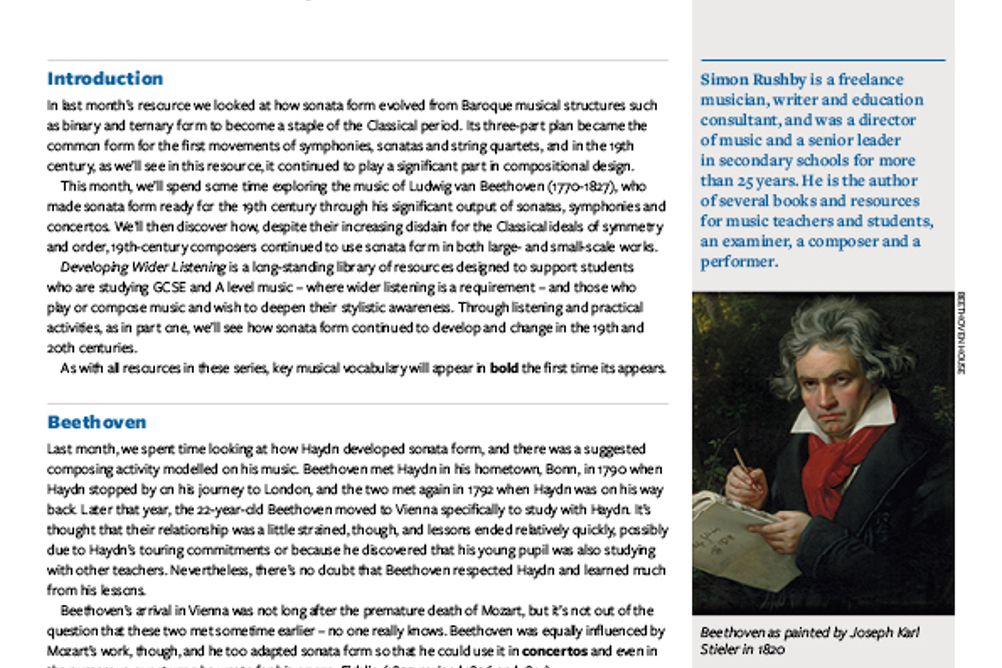Last month we looked at how sonata form evolved from Baroque musical structures to become a staple of the Classical period. Its three-part plan became the common form for the first movements of symphonies, sonatas and string quartets, and in the 19th century it continued to play a significant part in composition. This month, we explore the music of Ludwig van Beethoven (1770-1827), and then discover how 19th-century composers continued to use sonata form in both large- and small-scale works.

Register now to continue reading
Register to the Music Teacher website today to read more of the latest news and developments from the world of music education.
You'll receive:
-
Free access to 4 subscriber-only articles per month
-
Email newsletter providing advice and guidance across the sector
Already have an account? Sign in here
